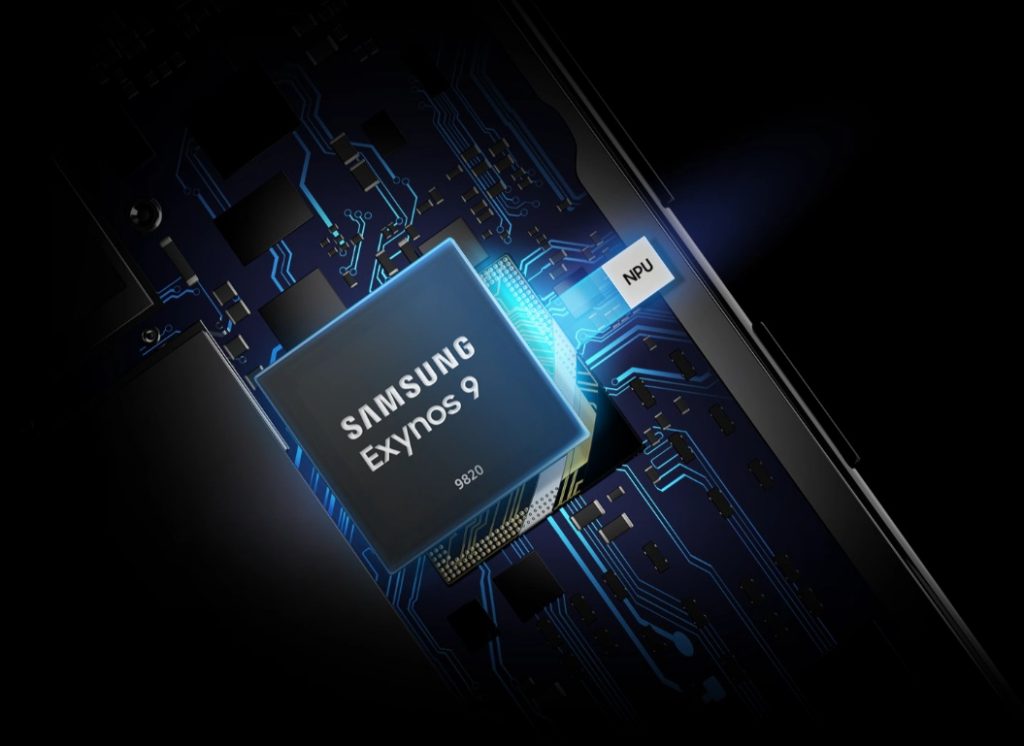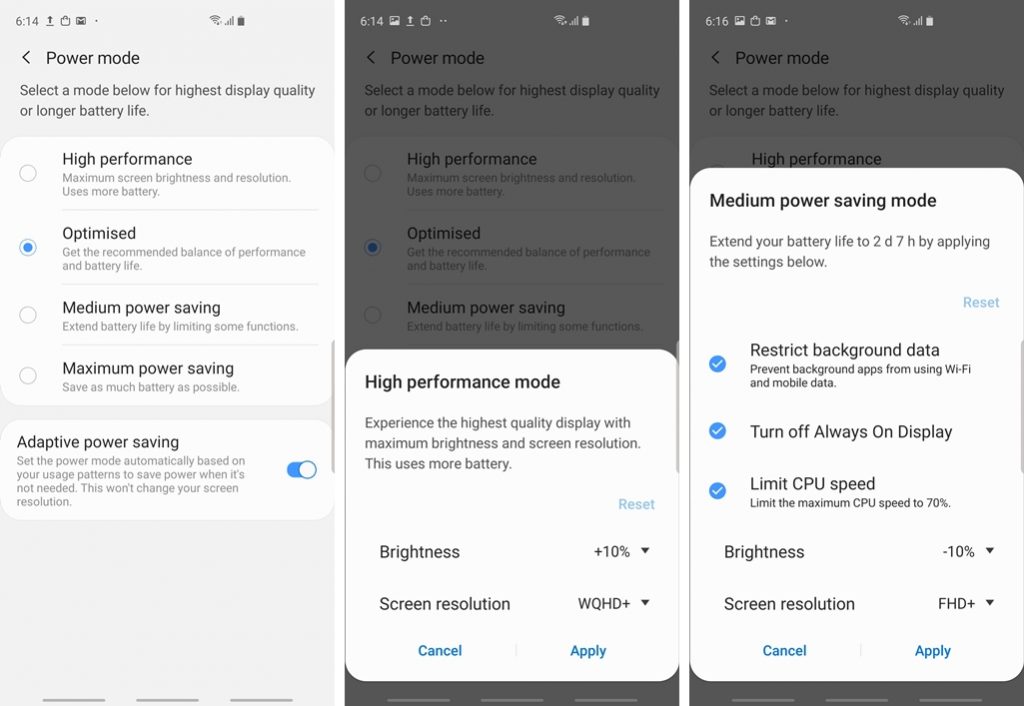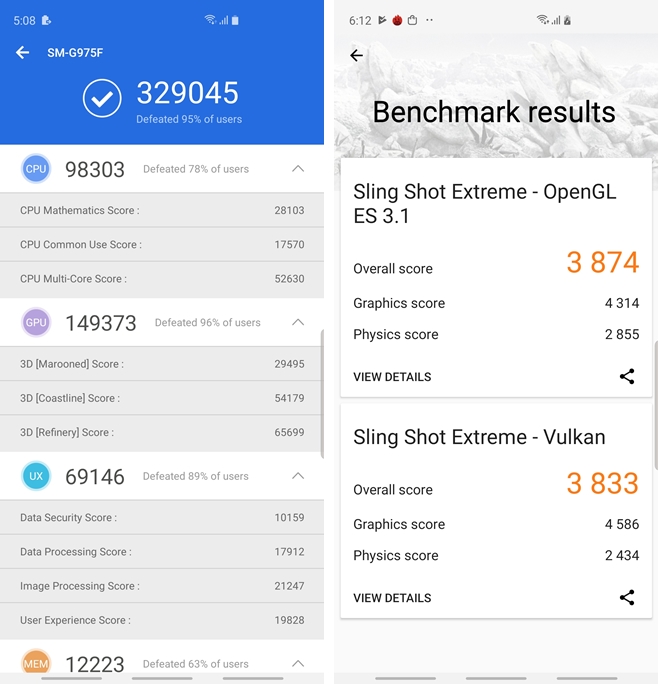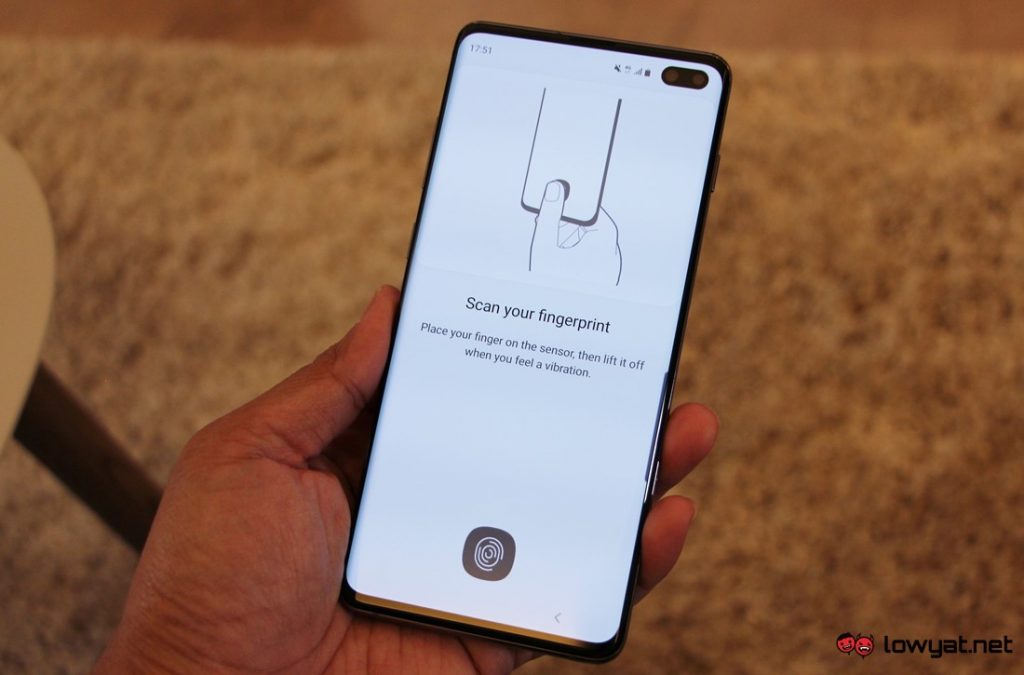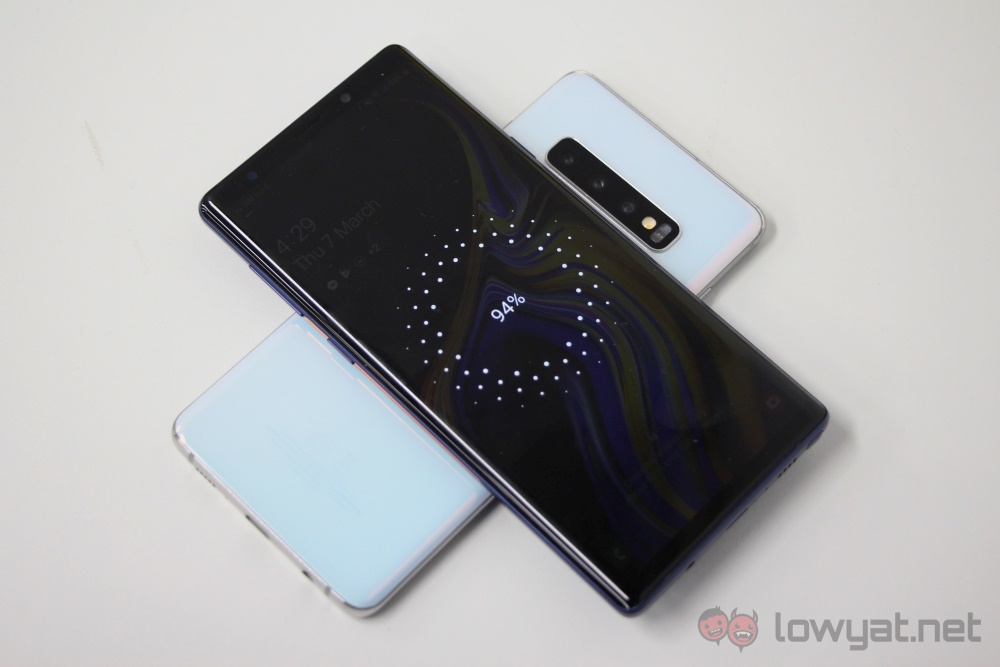Intelligent Performance
We mentioned previously that the Samsung Galaxy S10 is powered by a Samsung Exynos 9820 chip. It makes use of a new AI software to automatically optimise resources like battery, CPU and RAM. This means better performance when the Samsung Galaxy S10 is in use, and better battery life when it is not.
Since we haven’t had the Galaxy S10+ for long, we weren’t able to test to see if the on-board AI is indeed managing battery consumption better than before. That said, considering the fact that the Samsung Galaxy S10+ has a 4100mAh battery which is much larger than what the Samsung Galaxy S9+ and Note 9 have. Hence, it should hold enough charge to for your daily needs, and then some. But one thing that we can test for is performance. Here are the scores we received on our test unit:
Ultrasonic Fingerprint
Before, we said that the ultrasonic in-display fingerprint sensor is fast and accurate. Of course, that’s not all there is to it – it’s also secure.
The fingerprint scanner itself makes use of Qualcomm’s 3D Sonic Sensor that has been strengthen with Samsung Knox security solution. As compared to a typical optical-based solution which used 2D snapshots of your fingerprints, the ultrasonic fingerprint scanner on the Galaxy S10 series captures your fingerprint in 3D. This ensures that the fingerprint lock won’t be spoofed by a photocopy of your prints. At the same time, the new ultrasonic fingerprint also means no more accidental smudging of the rear camera lens since it is located on the front of the phone instead of the back.
Wireless Powershare
In addition to that, the Samsung Galaxy S10 series also comes with the support for wireless charging. In fact, the wireless charging feature on Galaxy S10 series is up to 36% faster than Galaxy S9 series through its Wireless Fast Charging 2.0 tech although that require a charger that supports 10W+ wireless charging such as the Samsung Wireless Charger Duo. That’s not all though; new to the Galaxy S10 series is the ability to wirelessly charge other devices through Wireless Powershare.
Picture this scenario – you’re about to meet a friend for lunch, and you had your Galaxy Buds on for the journey there. And you realise that they may not have enough charge in them to last the journey back. All you need to do is to let your Samsung Galaxy S10 charge the Galaxy Buds during lunch via wireless charging and you’ll have a fully charged set of earbuds by the time you leave. This covers the first three features of the Samsung Galaxy S10 series of phones. Stay tuned for the second part where we cover even more features on the new Samsung Galaxy S10. Disclaimer: This article is sponsored by Samsung.
